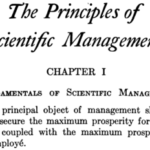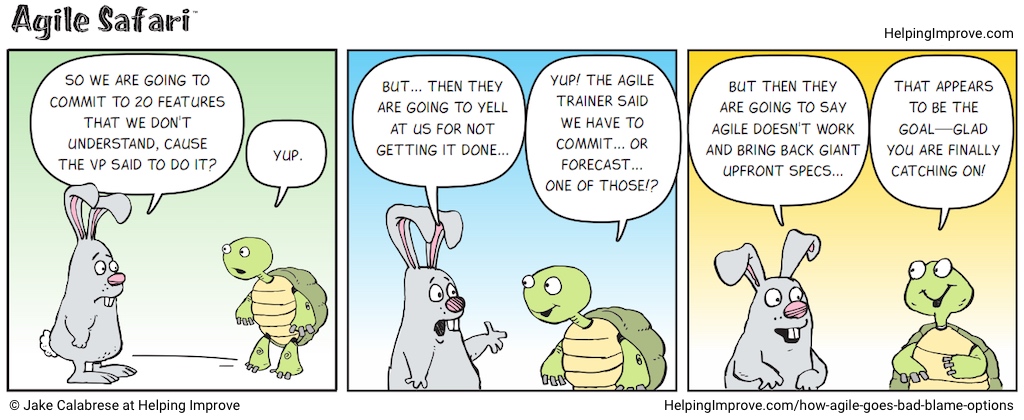Have you ever been in a situation where your organization suddenly faces an urgent, high-priority task? If so, you’ve probably heard someone suggest forming a “Tiger Team” to tackle it. It sounds great in theory, right? “A special team of top performers laser-focused on solving the big problem.” But here’s the thing – Tiger Teams often create more problems than they solve. Let’s dive into why this approach can be problematic and explore better alternatives.
Project Management
Prioritizing Work – “More People” is Not the Answer – Stop Making Excuses
Have you ever thought, “If only we had more people, we could get everything done?” If so, you’re not alone. I’ve been getting this question a lot lately, and I’ve got to tell you, it always makes me laugh a bit. Why? Because it’s based on a fundamental misunderstanding of how work actually gets done.
The Highway of Work: Why Prioritization is Your Fast Lane to Success
Prioritization of work is key if you want to deliver anything. Have you ever been stuck in bumper-to-bumper traffic, inching forward at a snail’s pace? It’s frustrating, right? Now, imagine if I told you that many organizations manage their work in a way that’s just as inefficient. Sounds absurd, doesn’t it? But stick with me, and I’ll show you why this analogy isn’t as far-fetched as you might think.
Transparent Business Decisions [Video]
So one of the challenges that we run into a lot, we’re talking about Agile, we’re talking about Scrum, Kanban, anything really within Agile, is that people talk about empiricism. Empiricism is just inspect and adapt and be transparent – inspection, adaptation, and transparency. The problem is that while these make nice posters and t-shirt … Continue Reading→
Estimation Alternatives, Part 2: Products vs. Projects
 “I don’t understand products vs. projects. What’s the difference?”
“I don’t understand products vs. projects. What’s the difference?”
When I share some of my stories about working with product development teams, some people look at me as if I’m describing the impossible. They seem confused when I tell them about agile teams that didn’t have to provide story point estimates to management or normalize points across teams. What I’m talking about is so far outside of their experience, they can’t conceive of how it could work. One of the most challenging things for me to explain to people who haven’t experienced both is the difference between project- and product-based organizations.
Estimation Alternatives, Part 1: Feature Budgets

The most common question on any project is, “How long with this take?” This question isn’t too difficult to answer when the work is small – a few minutes to a few days. Problems start when someone wants an estimate for a chunk of work you can’t complete in just a few days. Requests for estimates like this come from a need to make higher-level planning decisions. But estimates aren’t the only way to make these decisions. Over the last fifteen years of working with agile teams, I’ve seen value in exploring estimation alternatives. Two, in particular, come to mind, the first of which I’ll describe here: Shifting conversations about estimating to budget discussions.
Agile Leadership Myth #3: Leaders & Managers will figure out what their agile role is magically
We have done a huge disservice to leaders and managers, as well as teams. There are plenty of people that will say we don’t need managers and leaders. People can lead themselves. While there is an aspect of this that may be true, there are a lot of steps to get close to that idea.
This article will explore what leaders and managers need to do to succeed as they get started with agile or to help teams move from individuals to a team or even a high-performance team. It builds on Agile Leadership Myth #2: Self-Organizing Teams Don’t Need Any Help.
Agile Leadership Myth #1: Telling people “You Are Empowered” Actually Works
A major challenge we run into when helping organizations shift or improve is leadership misconceptions. Agile leadership myths cause a lot of these misconceptions. We need to help avoid falling into the trap of these common myths because they limit our success. A root cause of many of the myths is that people simply don’t know what else to do. For example, Myth #1: ‘telling people “you are empowered” actually works.’ Leaders often don’t know what else to do, other than tell teams they are empowered. We see this with Development Teams, Scrum Teams, Delivery Teams, AND Leadership Teams.
For example, Myth #1: ‘telling people “you are empowered” actually works.’ Leaders often don’t know what else to do, other than tell teams they are empowered. We see this with Development Teams, Scrum Teams, Delivery Teams, AND Leadership Teams.
A bit of background — there are many agile leadership myths out there. These myths (or assumptions) limit leaders ability to improve, help others, and succeed. Many myths seem to occur at a nonconscious level, meaning they function like many biases. People are not even aware, consciously, that they are happening.
Limit Engagement, Limit Success – Scientific Management Problems
We require environments where people can provide input and ideas. If we limit engagement, we limit success. We still have organizations that either believe or act like they believe some types of workers are “stupid.” This idea dates back to the ideas surrounding Scientific Management, Fredrick Taylor, and Henry Ford. The concept of the stupid or unskilled worker that I mentioned was common in the early 20th century. In various writings about agile and agile ideas, we often refer to or see references to avoiding Scientific Management, Classic Scientific Management, or Taylorism. These management ideas limit engagement from people, which is going to limit success.
Understanding the past can be quite helpful to see where you might be able to improve today.










